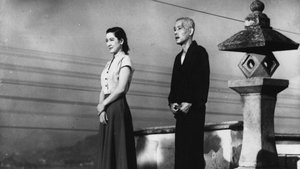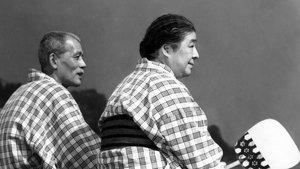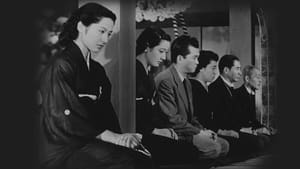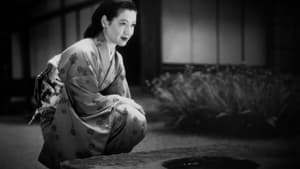Exploring Family Dynamics and Change: Tokyo Story 1953 Review

Introduction
Tokyo Story (1953) stands as a timeless masterpiece of Japanese cinema, exploring the intricacies of family relationships and societal changes in post-war Japan. In this review, we’ll delve into the film’s narrative depth, the significance of its early colored version, and its enduring legacy in the world of cinema.
Check The Full Colorized Movies List
Check Our YouTube Channel
Check Our Colorized Movies Trailer Channel
Understanding Tokyo Story 1953: Director, Cast, and Genre
Directed by the acclaimed filmmaker Yasujirō Ozu, Tokyo Story (1953) features an ensemble cast including Chishū Ryū, Chieko Higashiyama, and Setsuko Hara. Ozu’s vision for the film transcends mere storytelling, delving into the complexities of human emotions and interpersonal dynamics. Tokyo Story (1953) falls under the genre of family drama, a genre that Ozu mastered with his unique directorial style.
Exploring the World of Tokyo Story 1953: Plot and Characters
Set in post-war Japan, Tokyo Story (1953) follows an elderly couple, Shūkichi and Tomi, as they journey from their rural hometown to Tokyo to visit their adult children. However, upon their arrival, they find themselves neglected and isolated amidst the hustle and bustle of modern urban life. Through its subtle storytelling and poignant characterizations, Tokyo Story (1953) paints a vivid portrait of generational divides and the passage of time.
The Art of Film Colorization
Film colorization, the process of adding color to black and white films, has been a subject of debate among cinephiles and filmmakers alike. While some argue that colorization offers a fresh perspective on classic films, others maintain that it compromises the integrity of the original artistic vision. Tokyo Story (1953) presents an interesting case study in the context of film colorization, as its early colored version seeks to enhance its visual appeal while staying true to its thematic essence.
Early Colored Films: A Brief History
The emergence of early colored films marked a significant milestone in cinematic history, opening up new possibilities for visual storytelling. From hand-painted frames to early colorization techniques, filmmakers experimented with various methods to bring color to the silver screen, paving the way for the vibrant cinematic landscapes we see today.
Tokyo Story 1953 and Its Early Colored Version
The decision to release Tokyo Story (1953) in a colorized format reflects a growing trend in the film industry to update classic movies for contemporary audiences. While purists may argue that the film’s original black and white presentation is integral to its artistic integrity, others appreciate the opportunity to experience it in a new light. The early colored version of Tokyo Story (1953) offers viewers a fresh perspective on Ozu’s timeless masterpiece, inviting them to rediscover its beauty in vibrant hues.
The Debate Over Film Colorization
The debate over film colorization continues to divide audiences and filmmakers, with proponents advocating for its ability to breathe new life into old classics, while opponents argue that it dilutes the authenticity of the original films. Tokyo Story (1953) finds itself at the center of this debate, as its early colored version sparks discussions about the ethical implications of altering cinematic masterpieces.
Examining Tokyo Story 1953 as an Early Colored Film
As we analyze Tokyo Story (1953) in its early colored form, we must consider how colorization impacts the film’s overall aesthetic and emotional resonance. While some may appreciate the added visual richness that color brings to the narrative, others may feel that it distracts from the film’s subtle nuances and understated elegance. Ultimately, the decision to embrace or reject the early colored version of Tokyo Story (1953) is a matter of personal preference.
Influence and Legacy: Tokyo Story 1953’s Impact on Cinema
Tokyo Story (1953) has left an indelible mark on the world of cinema, inspiring generations of filmmakers with its profound insights into the human condition. Its influence can be seen in the works of directors such as Akira Kurosawa and Hirokazu Kore-eda, who have drawn inspiration from Ozu’s minimalist storytelling and keen observations of everyday life.
Director’s Cinematic Legacy: Beyond Tokyo Story 1953
Yasujirō Ozu’s legacy extends far beyond Tokyo Story (1953), encompassing a body of work that continues to resonate with audiences around the world. His unique directorial style, characterized by its simplicity and depth, has earned him a place among the greatest filmmakers in history.
Themes Explored in Tokyo Story 1953
Tokyo Story (1953) explores themes of family, aging, and societal change with grace and poignancy. Through its intimate portrayal of ordinary lives, the film invites viewers to reflect on their own relationships and the passage of time.
Reception and Controversy Surrounding Tokyo Story 1953
Upon its release, Tokyo Story (1953) received widespread critical acclaim for its profound storytelling and nuanced performances. However, the decision to colorize the film has sparked controversy among cinephiles, raising questions about the preservation of cinematic heritage and the ethical implications of altering classic movies.
Where to Watch Tokyo Story 1953 Online
Tokyo Story (1953) is available for streaming on various platforms, including Criterion Channel, Amazon Prime, and Hulu. Whether viewed in its original black and white format or its early colored version, the film remains a must-watch for fans of classic cinema.
















